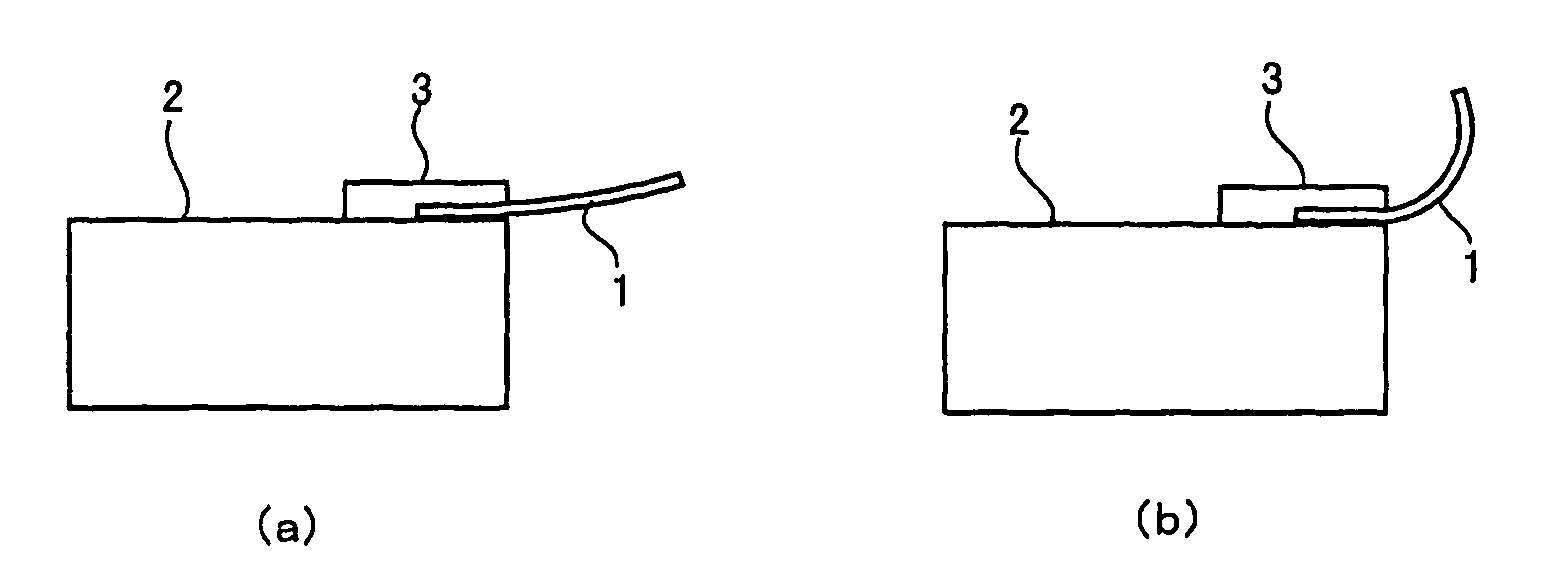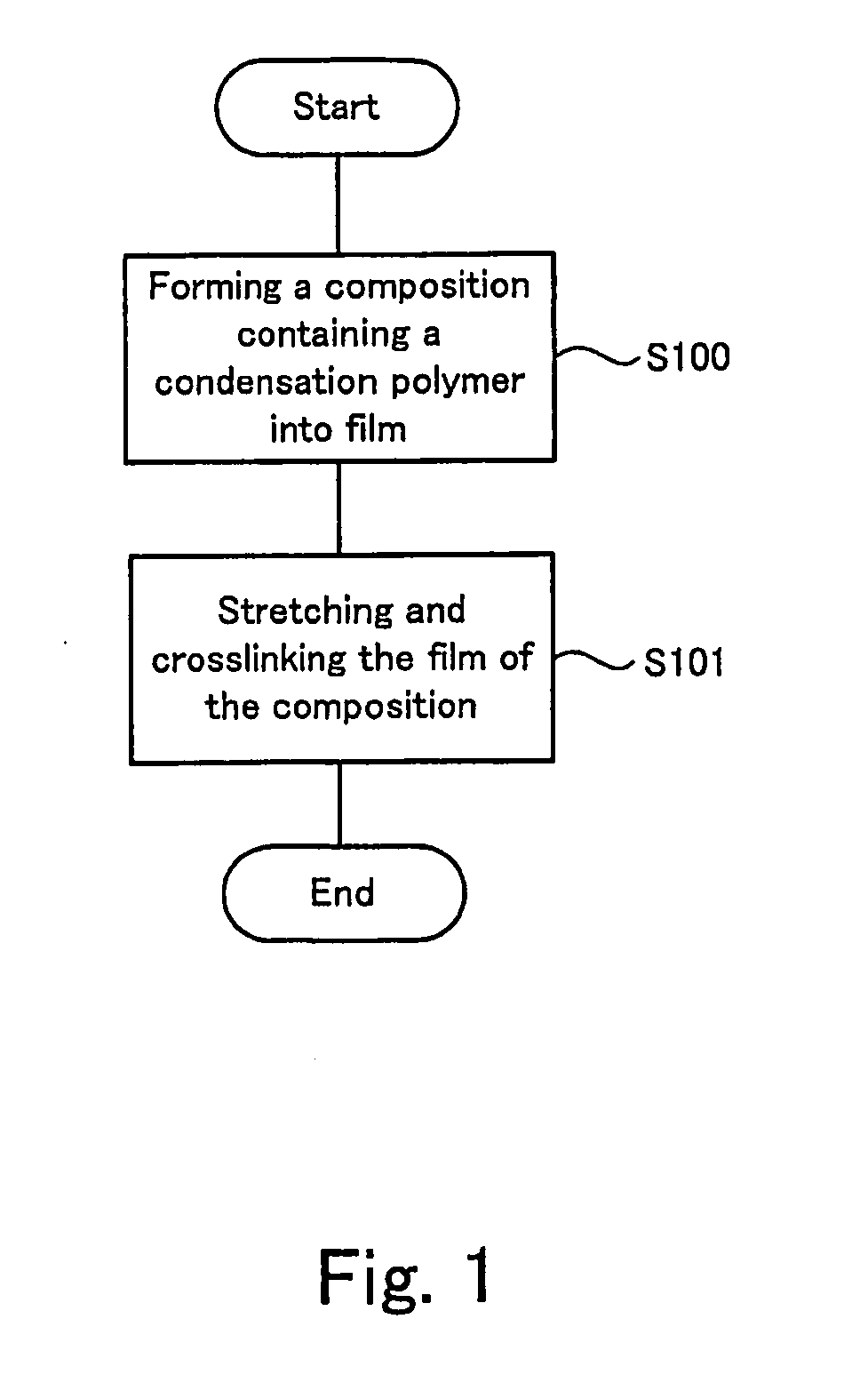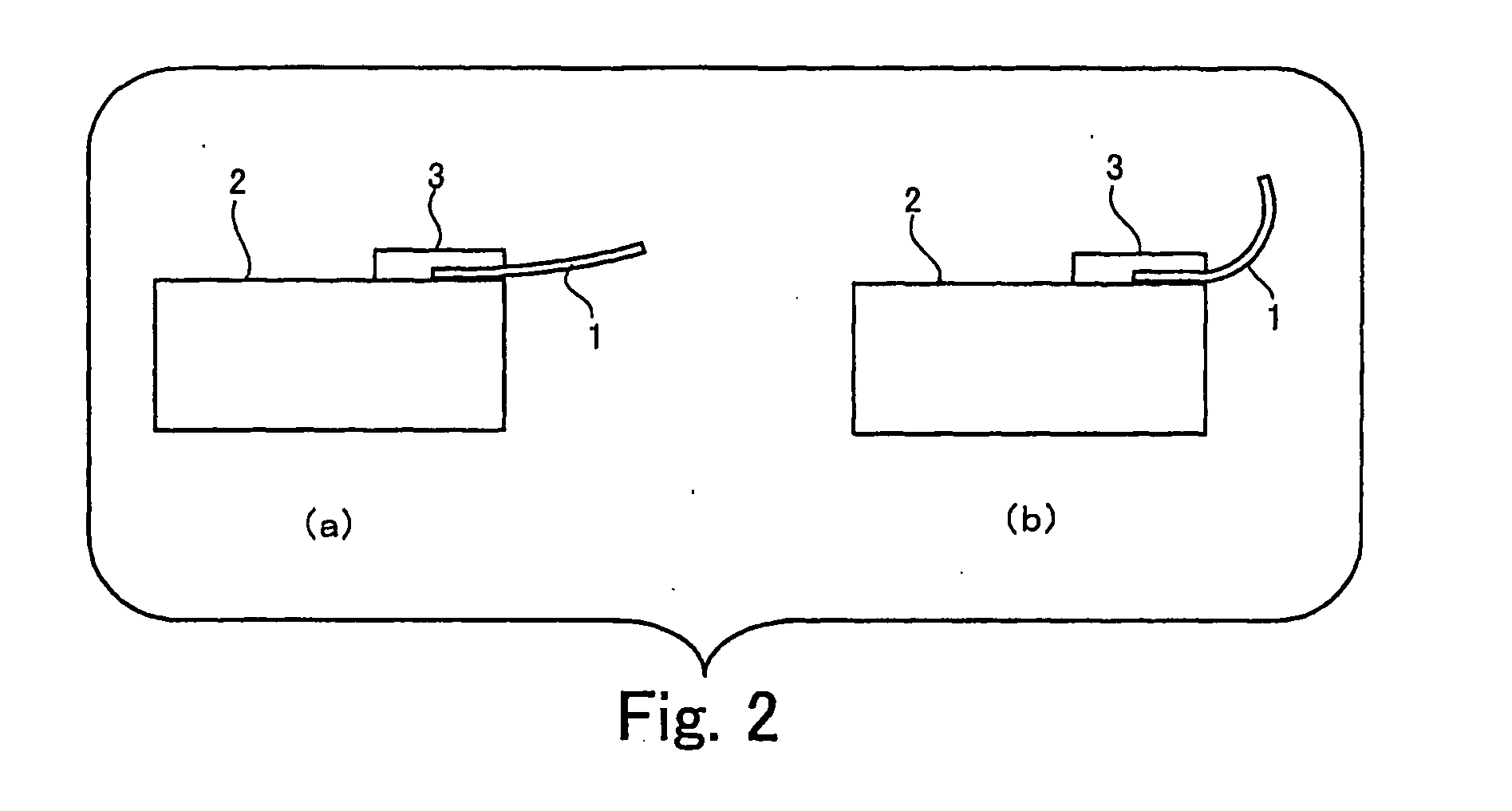Optically driven actuator and method of manufacturing the same
a technology of actuators and actuators, applied in the direction of machines/engines, mechanical equipment, other domestic objects, etc., can solve the problems of unfunctional gels in dry environments, low response speed, and small contraction rate, and achieve easy manufacturing of photoresponse, enhance processability, and enhance processability
- Summary
- Abstract
- Description
- Claims
- Application Information
AI Technical Summary
Benefits of technology
Problems solved by technology
Method used
Image
Examples
example 1
Synthesis of Photoresponsive Crosslinked Polymer P-1 (Preparation of First and Second Optically Driven Actuators)
[0072]
[0073]To an aqueous solution prepared by adding 90 ml of water to 22 ml of an aqueous solution of 37% by weight hydrochloric acid, M-1 (10.91 g, 0.100 mols) was added and cooled to 5° C. or lower. To this solution, an aqueous solution prepared by dissolving 7.59 g of sodium nitrite in 22 ml of water was added dropwise (internal temperature was 5° C. or lower). The mixed solution was stirred for 30 minutes while keeping the internal temperature at 5° C. to 10° C. The resultant solution was added dropwise to a solution of M-2 (15.02 g, 0.100 mol) in an aqueous solution of sodium hydroxide (sodium hydroxide: 16.12 g, water: 90 ml), while keeping the internal temperature at 5° C. or lower, and the mixed solution was stirred for 30 minutes. The resultant reaction product was added to an aqueous solution of 1 N hydrochloric acid (1.5 L), and the produced precipitate was f...
example 2
Synthesis of Photoresponsive Crosslinked Polymer P-12 (Preparation of Third, Fourth and Fifth Optically Driven Actuators)
[0078]
[0079]First, M-3 (2.703 g, 10 mmols) was dissolved in an aqueous solution of sodium hydroxide (sodium hydroxide: 0.81 g, water: 100 ml), and to the resultant solution, tetra-n-butylammonium chloride (1.60 g, 5.76 mmols) was added. Then, a solution prepared by dissolving M-4 (0.27 g, 1.5 mmols) and M-6 (1.79 g, 8.5 mmols) in 1,2-dichloroethane (30 ml) was added dropwise over 30 minutes, while vigorously stirring the M-3 solution, and stirred vigorously for another 30 minutes. To the resultant reaction product, 20 ml of methylene chloride was added so as to separate the organic layer. The separated organic layer was then washed with an aqueous solution of saturated sodium chloride and dried by adding magnesium sulfate. The solvent was distilled away to some extent to concentrate the organic layer, and the concentrated organic layer was added to methanol to be ...
example 3
Evaluation of Photoresponsivity for First, Third and Fifth Optically Driven Actuators
[0084]FIG. 2 is a diagram illustrating the evaluation experiment of photoresponsivity for the first optically driven actuator of Example 3 of the present invention.
[0085]Part (a) of FIG. 2 illustrates the state of the optically driven actuator before exposed to ultraviolet light. One end of the optically driven actuator 1 was fixed on the edge of the top surface of the stand 2 with clamps 3. The clamps 3 are made up of materials that intercept light.
[0086]Ultraviolet light of an intensity of 100 mW / cm2 (365 nm) emitted an ultraviolet irradiator (EXECURE 3000, manufactured by HOYA CANDEO OPTRONICS) was applied to the first optically driven actuator 1 directly from above at room temperature.
[0087]Part (b) of FIG. 2 illustrates the state of the optically driven actuator 1 after ultraviolet radiation. As shown in part (b) of FIG. 2, the optically driven actuator 1 in the uniaxial stretching direction ch...
PUM
| Property | Measurement | Unit |
|---|---|---|
| optical stimulation | aaaaa | aaaaa |
| size | aaaaa | aaaaa |
| weight | aaaaa | aaaaa |
Abstract
Description
Claims
Application Information
 Login to View More
Login to View More - R&D
- Intellectual Property
- Life Sciences
- Materials
- Tech Scout
- Unparalleled Data Quality
- Higher Quality Content
- 60% Fewer Hallucinations
Browse by: Latest US Patents, China's latest patents, Technical Efficacy Thesaurus, Application Domain, Technology Topic, Popular Technical Reports.
© 2025 PatSnap. All rights reserved.Legal|Privacy policy|Modern Slavery Act Transparency Statement|Sitemap|About US| Contact US: help@patsnap.com



